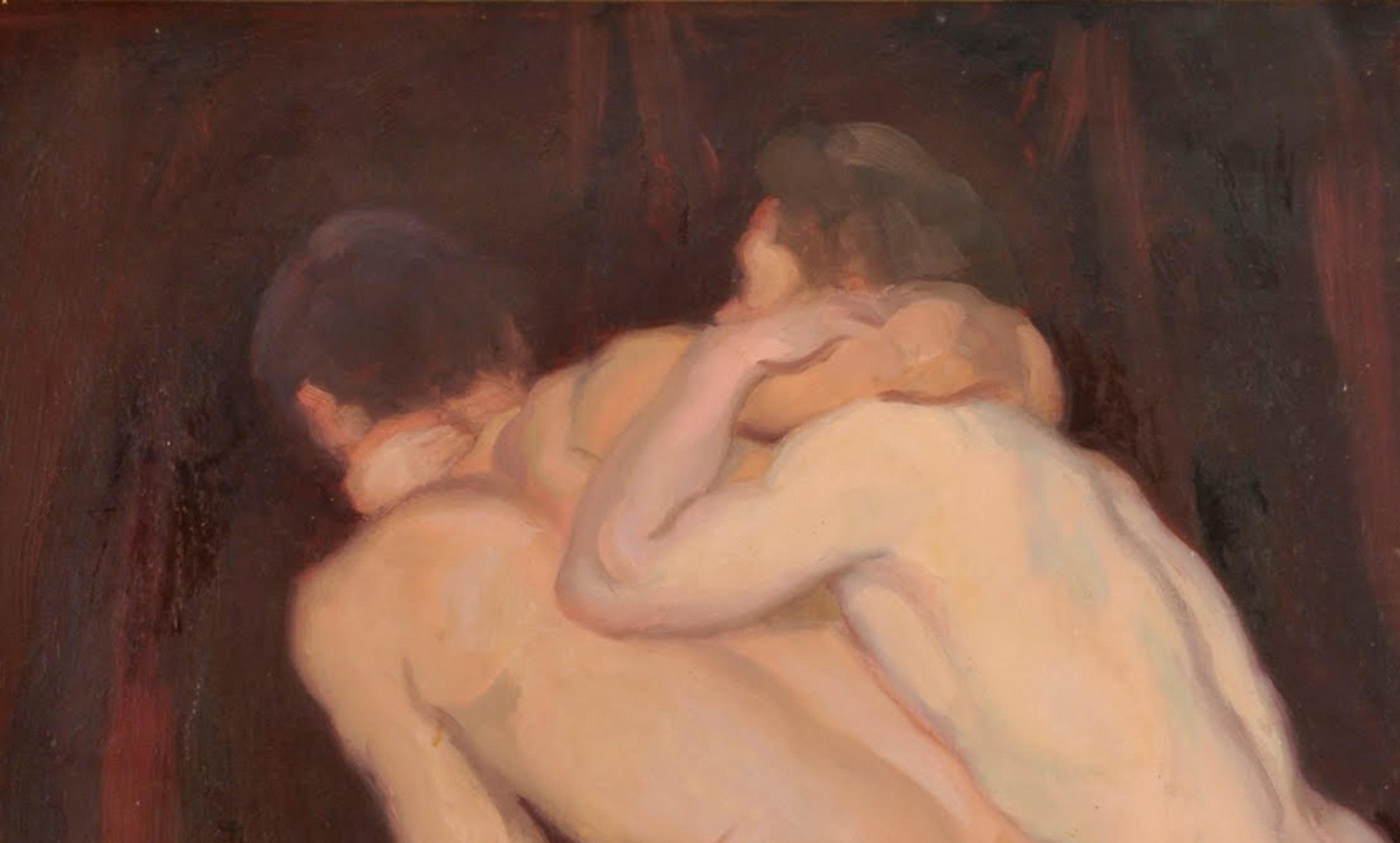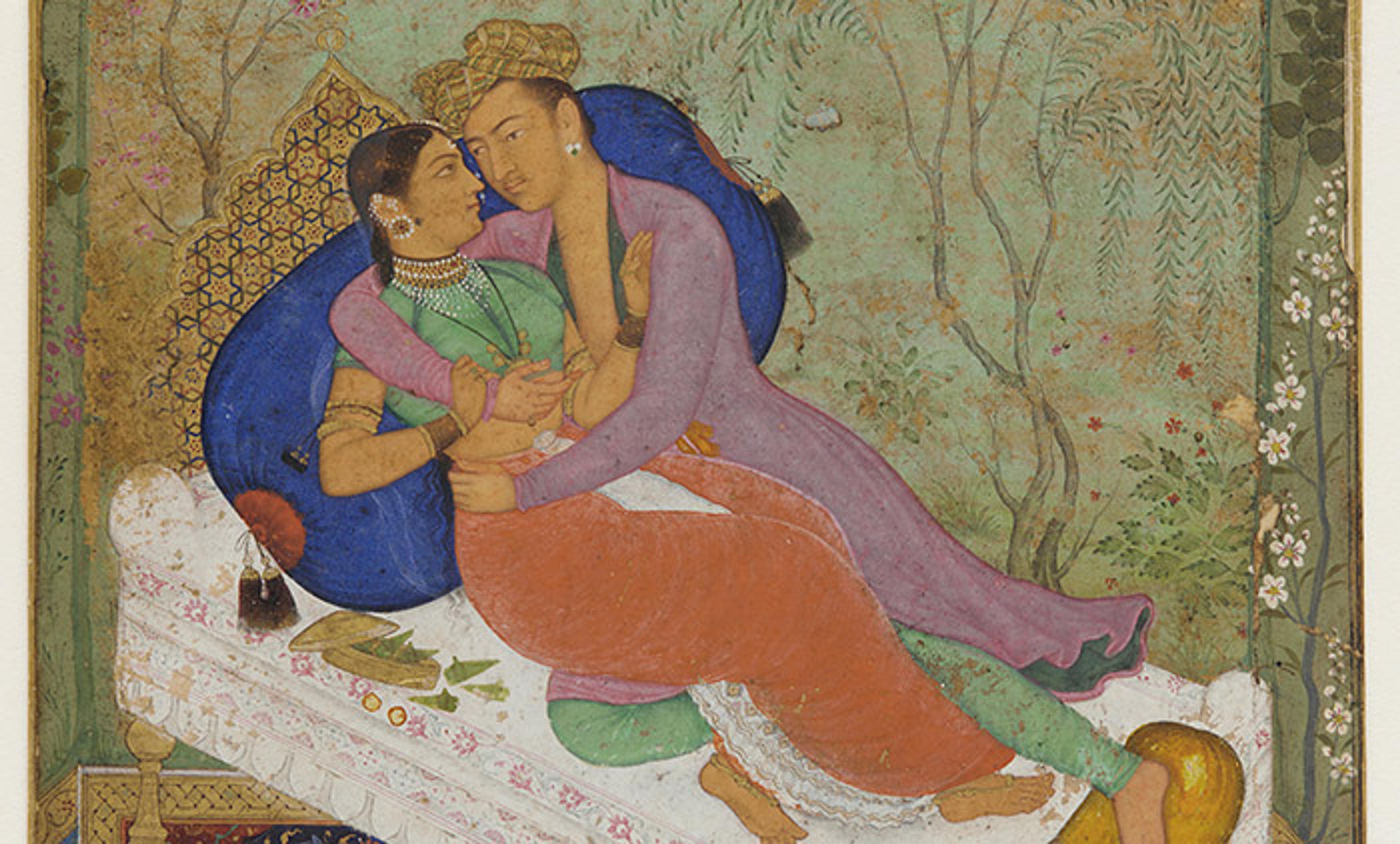The Rape of the Daughters of Leucippus (c1618) by Peter Paul Rubens. Alte Pinakothek/Wikimedia
‘Rape fantasies,’ says M, an American kink educator, ‘are one of the most common fantasies for women.’ Studies attempting to quantify just how common yield wildly different results, likely thanks to their limited sample sizes, varied methodologies, and the risk of response bias when answering questions about taboo subjects such as sex and desire. But the research suggests that up to 62 per cent of women experience fantasies about some sort of non-consensual sexual encounter at least once in their lives, 14 per cent of them have these fantasies at least weekly, and 9 to 14 per cent consider them their most frequent or favourite fantasies. Some women, such as M, play out these fantasies with their partners; part of M’s work is teaching people how to do so in negotiated, safe and comfortable scenarios.
Justin Lehmiller is an American social psychologist and sex researcher who has studied these fantasies, most recently for his book Tell Me What You Want (2018). ‘To be clear,’ he says, ‘the vast majority of people with forced-sex fantasies have not been sexually victimised.’ In fact, rape fantasies appear to be common across most demographics. That is likely why non-consensual sex is (and has long been) a cornerstone of mass-market women’s erotica. Patricia Hawley, a professor at Texas Tech University who studies power and gender and co-authored a major paper on this topic a decade ago, says that this fantasy ‘is so normative … that it is vanilla’.
But, though common, such fantasies can be uncomfortable for those who experience them, and cultural critics perpetuate that feeling. Some say that the fantasies are a protective mechanism for women taught to believe that they should not have sexual urges. Others have claimed that they are direct reflections of rape culture, internalised as one’s own desires – patriarchal brainwashing. Others still argue that, for women who develop these fantasies after sexual abuse, they are manifestations of their assailants’ continued control over them. Rape fantasies, Hawley stresses, ‘have been pathologised for a century’ by thought influencers.
The question of how to balance, as M puts it, ‘feelings of “fuck the patriarchy” with … feelings of “fuck me, daddy”’ is especially salient in the modern cultural climate, after years of increasingly widespread anti-rape-culture activism, and two years into the modern #MeToo movement and its deep scrutiny of sexual norms.
‘The #MeToo movement makes things confusing,’ says Hawley. She stresses that she is a part of the movement, but argues that elements of its cultural narrative can contribute to the pathologisation of forced-sex fantasies. So how can the many women who experience rape fantasies, but reject rape culture, reconcile their erogeny and ideology, especially in an era of heightened cultural scrutiny?
This is an especially difficult task, given that academics and cultural critics have offered many different possible explanations for rape fantasies – some of them pathologising, and some of them not – but few have backed their ideas with evidence. Some scholars, Hawley points out, base their theories on their own personal interpretations of fantasies. However, it is not easy, she acknowledges, for everyone to dig into that literature and deconstruct each explanation and its merits or demerits.
It might be tempting to reject the notion of rape fantasies as toxic cultural conditioning by swinging the other way and arguing that they are an inherent part of our animal nature: males are dominant and females are submissive, naturally. But such evolutionary arguments, Hawley points out, often rely on slim, over-interpreted evidence. And, adds M, they might not be that convincing for those exploring such fantasies – people who do recognise some reflection of contemporary culture in their desires. Many evolutionary arguments are still ultimately pathologising, when they argue, for example, that submission and rape fantasies evolved as coping mechanisms in our female ancestors to survive systematic rape by our male ancestors.
Plus, they do not account for the reality that both Hawley and Lehmiller note: men can also have fantasies about being dominated by forceful women or men – experiencing sex with varying degrees of non-consent or violence. Men’s experiences, Hawley suggests, simply aren’t questioned by cultural critics, or even studied as often by academics, as women’s.
And anyway, as the Californian sex therapist Susan Block puts it: ‘Most human fantasies are acculturated by our culture. They’re not just natural.’ Even if these fantasies might not exist in a sexual utopia free of gendered hierarchies and widespread sexual abuse, it is OK, as M argues, to feel and explore them – because they are vastly different from rape itself.
The majority of rape fantasies involve someone the fantasiser actually desires, often despite persistent resistance to them, and sometimes only without clear consent. These fantasies ultimately give the fantasiser power, whether that means total control of one’s own daydream, or the more limited but still potent control of negotiating a lived sexual scenario with a trusted partner.
Even in a rape-laden culture, there is no single explanation for rape fantasies. Some people, M notes, might use such fantasies to process their feelings about all the sexual violence they observe in the world. (‘Overturning hierarchies,’ notes Block, ‘is always a part of human sexuality. Transgression is part of what wakes us up and makes us feel sexual.’) Some who have directly experienced sexual violence might use such fantasies to reassert their sexual agency and control. Others might have these fantasies because dominant people like others who are dominant, as Hawley’s research suggests. Or, as some sex therapists have noted, dominant people might want to relinquish their dominance and feel submission in controlled mental or physical spaces.
Block finds it easier to reconcile rape fantasies with anti-rape beliefs than she does to understand why people ‘get a gas out of horror movies, watching people get chopped up and brutally murdered. How do people square that [with their personal values]?’
Resolutions might be hard to reach as long as we label these thoughts ‘rape fantasies’, despite the clear line between them and actual rape. ‘Having this harsh, laden term for something can make it sound very shameful,’ explains M. That is why there is growing support for shifting the terminology towards something like ‘consensual non-consent’ (CNC), a common term in the kink world, or ‘forceful submission fantasies’, the term Hawley adopted in her research.
M notes that it would be great if people with rape fantasies had the space to openly deconstruct them. Others in kink and academic circles worry that talking openly about forceful fantasies could pour fuel on anti-#MeToo reactionary movements. M adds that ‘it could be feeding something to defence lawyers’, who could use these fantasies against alleged victims. ‘If I were to be sexually assaulted by someone who knows me, I would have almost zero chance of any sort of justice – even less so than your average woman – because of my interest in CNC.’
That is a sad reality, because talking openly about these fantasies is likely key to helping many who experience them avoid any confusion and self-recrimination, and instead learn to explore their thoughts safely and constructively. But that is where our culture is today: in a state of flux, and a state of discomfort, in which it still takes pain and (often) isolation for many to learn that the sexual thoughts in their heads are not only common, but also valid.






